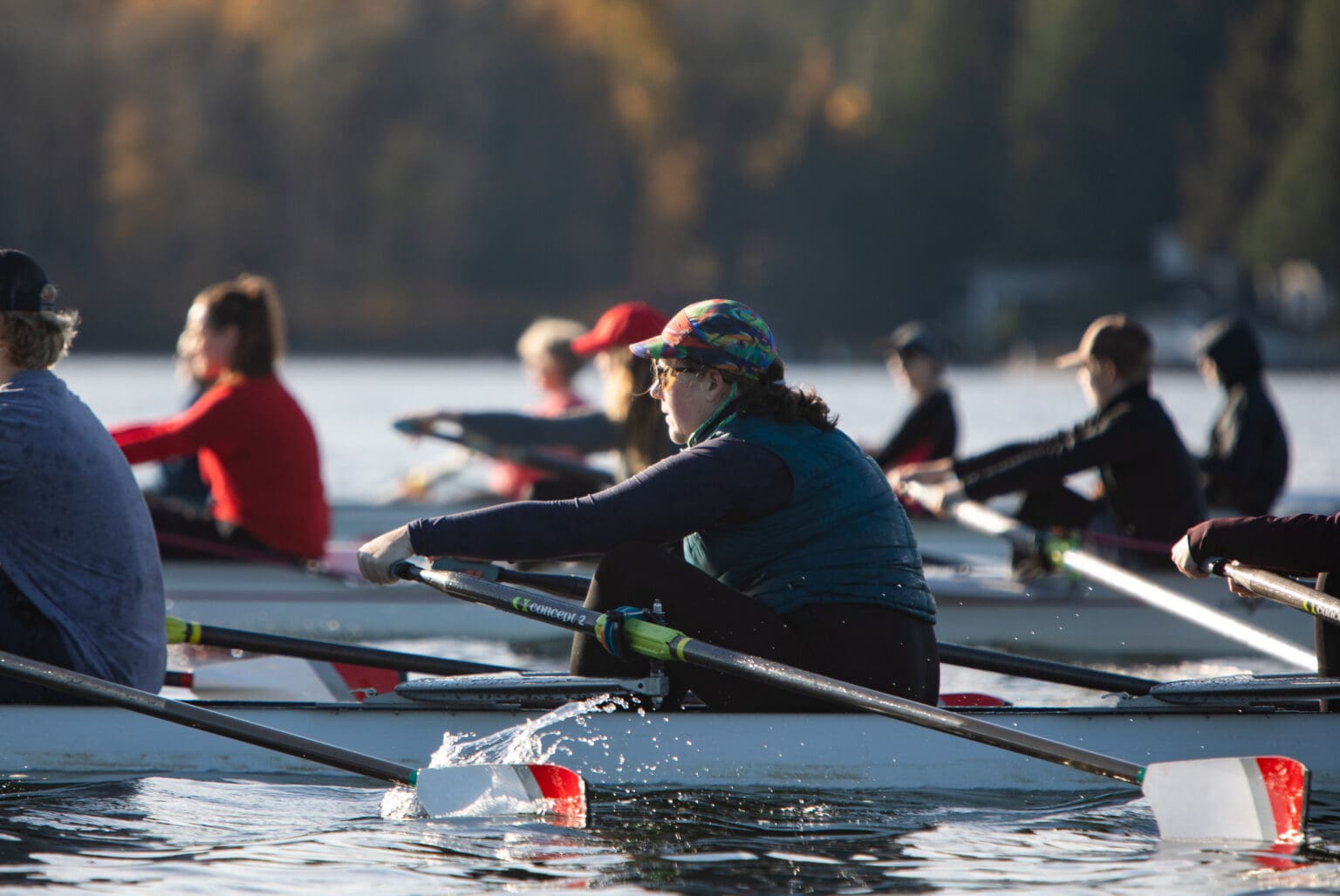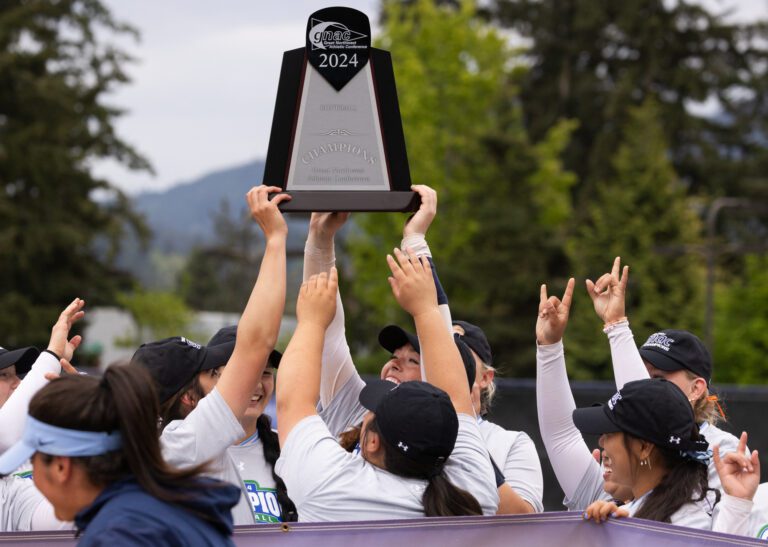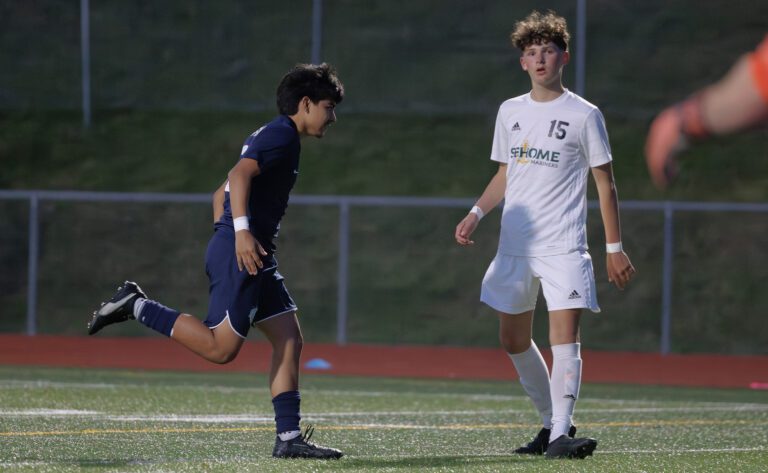Editor’s Note: Our Boys in the Boat is a series about the legacy of Whatcom and Skagit County rowers on the University of Washington crew that won Olympic gold in 1936, depicted in the book and movie “The Boys in the Boat.” Today’s story explores the Whatcom Rowing Association’s growth linked to the 2013 book. Coming this week: The untold story behind rowers Don Hume and Gordy Adam.
On a postcard-perfect Saturday morning on Lake Whatcom, program director and coach Courtney Moeller is idling the Whatcom Rowing Association’s launch boat as four rowing shells — two four-seats, two eights — await her instruction. The water is flat and winds calm, boats basking in rare mid-November sunshine.
Through her old-school megaphone, Moeller calls out the next set, a 60-second effort. Twenty-four rowers, oar blades flat on water to balance the precariously slim shells, are poised and still.
“Sitting ready. Ready all. Row!”
Fifteen minutes before, rowers ranging in age from 12 to 79 had left land behind, along with the morning’s frosted dew and a pile of shoes on the damp dock, to pursue both connection and perfection.
The rowing association started in 2011, two years before the book “The Boys in the Boat” became the sport’s most unexpected hit and surprise general audience bestseller. The story of the 1936 University of Washington eight-oared shell that won Olympic gold in Germany by beating Hitler’s team is now a movie, directed by George Clooney and set for Christmas week release. Two of the Olympic rowers hailed from Whatcom and Skagit counties.
Even before news of the movie, the book, now in its 10th year, has paid dividends for the club, now at 55 members.
Bellingham High School senior Keagan Robinson started rowing at 16 after two friends began rowing. Robinson said all three began the sport after reading the book. So did Sue Hyndman, now 75, and her husband Phil Whitson, 79.
Hyndman found herself “extremely inspired” by the story of the crew of nine (eight plus coxswain) hard-luck, Depression-era college boys who bonded and won as underdogs. Still, she said she and Whitson couldn’t relate to it personally. Hyndman had never played a team sport. Then, on a walk past Bloedel Donovan Park one day, they saw the club’s new boathouse going up, a project spearheaded by club founder Bob Diehl. Whitson found out about the club’s “Learn to Row” days, where people can get into a boat quickly. Now, 10 years later, they both row regularly with the club.
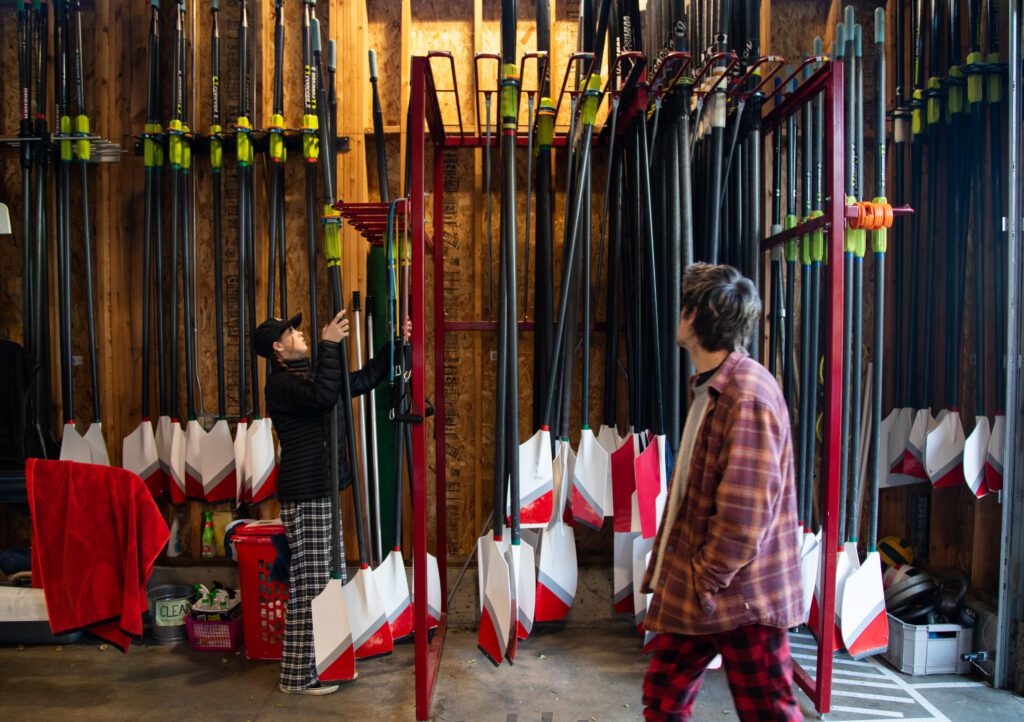
Robinson, whose application to colleges this fall has been driven in part by whether they have rowing teams, read the junior version of the book. A basketball player from second grade, he hadn’t been aware of rowing as a sport. One part of the book stuck with him.
Redmond-based author Daniel James Brown described that rowing “can be a little chaotic until everything just clicks,” Robinson remembers, “and you feel like you’re right in sync with the other person to the point where it’s kind of an experience that’s, like, beyond yourself.
“And I just wanted to experience what that was like, and see if I can get to that level.”
Robinson played basketball from second grade to sixth. But despite years of playing, it just didn’t feel right.
“My early basketball life was not the most fun thing to me,” he said. “My coaches, they were very good coaches, but they were pretty intense. And I was not the most naturally gifted at basketball. And I think what clicked with me with rowing was that it was definitely something that you can get better and better at but once you’ve mastered the basic technique, it’s a lot more about focus and drive.”
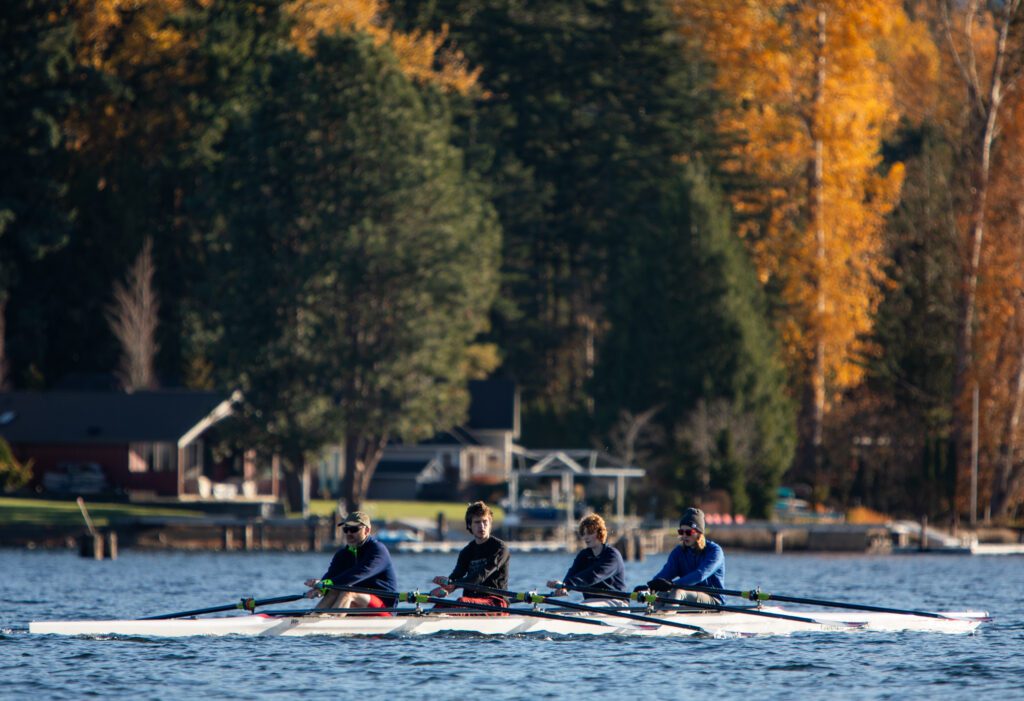
Heidi Ulrich, 16, of Bellingham started to row this summer and felt rowing’s singularity, too.
“You can learn the basics of it right away and get out in the water and participate,” she said. “For other sports, you have to know a lot before you can even start to contribute. Rowing — they kind of just put me into it. And I’ve learned by doing more than just repetition.”
Ulrich read “The Boys in the Boat” when someone handed it to her following her first four-day summer rowing camp. It was almost like it was part of the program.
“It’s a very encouraging sport, because you’re usually always with someone else in the boat,” Ulrich said.
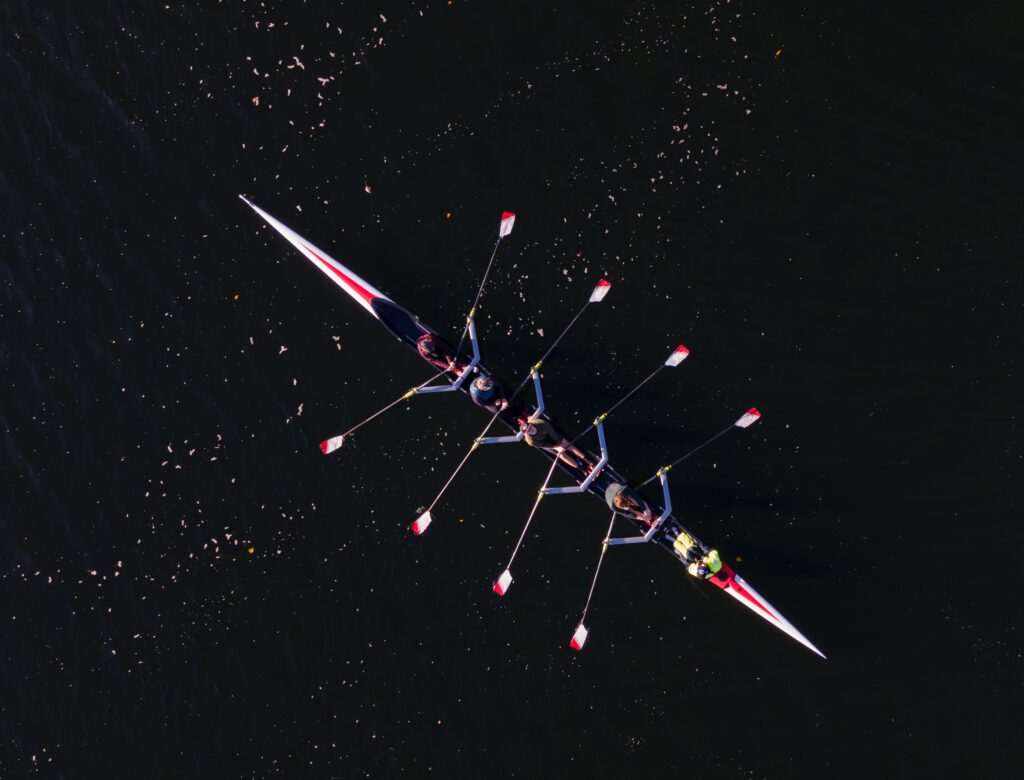
Olympians Don Hume and Gordy Adam
Leaning against a wall inside the club’s boathouse is a framed “Boys in the Boat” collage, with the book in the middle, flanked by black-and-white photos of the boys, medals and even world-famous UW boat designer George Pocock, whose company name is on some of the club’s boats.
Two “Boys in the Boat” Olympians, Don Hume and Gordy Adam, grew up not far from the Whatcom Rowing Association’s boathouse. Hume graduated from Anacortes High School, 39 miles away. Adam was raised on a dairy farm in Everson, 14 miles from Lake Whatcom.
The movie buzz, the book and the popular AppleTV+ streaming series “Lessons in Chemistry,” which also features rowing, are helping the sport get exposure, Moeller said.
“It’s starting to become a little more mainstream, or just in front of people, which is exciting,” she said. “Because that’s one of the hard things about rowing is that people just don’t really know that it exists … So hopefully, hopefully, this movie will inspire people to try and pick up an oar and get out here and join us.”
Moeller, a member of Western Washington University’s 2017 NCAA Division II championship team and current assistant coach there, points out that of the 14 masters rowers on the lake this day, half learned to row at the club. All the juniors did.
An estimated 15 juniors have gone on to row in college, more than half at the sport’s highest collegiate level, NCAA Division I schools including Washington, Oregon, Gonzaga, Seattle University and Southern Cal.
The club recently received a grant to expand its ErgEd program, which introduces rowing to middle-schoolers using indoor rowing machines.
Finding connections on the water
“The Boys in the Boat” is about winning, resilience and grit. It’s also about connecting, and finding a place where you belong. Rowing requires a team approach — lone wolves and superstars won’t work moving the big, slender boats on the water, or even to it. From the first moments of practice on that Saturday in November, club members work in unison following instructions from coxswains to get each shell from boathouse to lake. Everyone pitches in to bring oars and other gear.
Nurse and educator Natasha Barrow, 45, is Black in a mostly white sport. She didn’t know about “The Boys in the Boat.” She discovered rowing years ago during a work-related team-building exercise when she lived in San Diego. She eventually found clubs in Oregon and Seattle before moving to Bellingham.
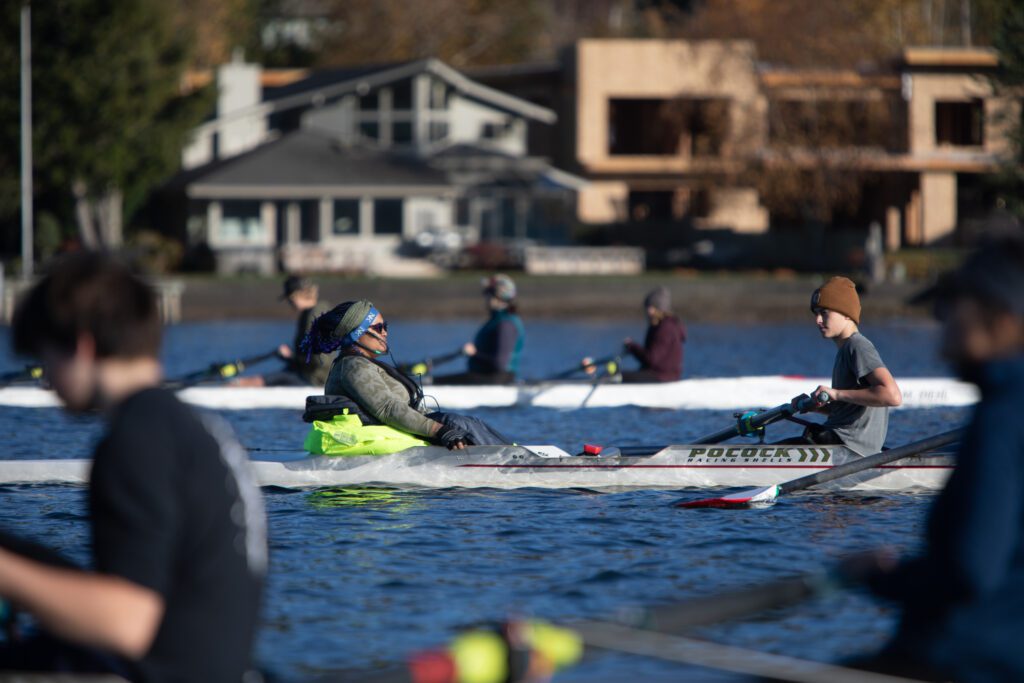
Barrow notes barriers to the sport include expense and unfamiliarity. Plus, she didn’t know if she’d fit in. Barrow was hesitant to even try, “nervous about if I’m going to be accepted because I’m an African-American,” she said.
But “I have never felt more accepted. People are so wonderful here. They’re kind … I really feel at home when I’m here.”
Members row for various reasons: a workout, camaraderie, recreation, training to race or win races. The club can accommodate everyone, Moeller said.
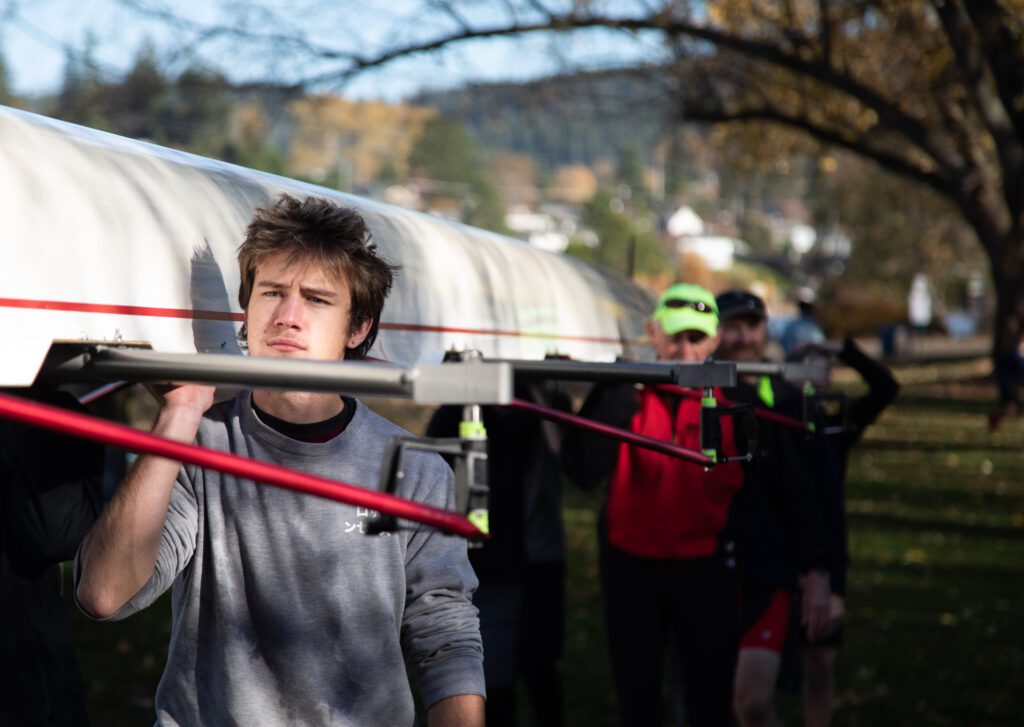
“Bellingham is … such a beautiful place to do all of the outdoor activities, that I think (rowing) is still pretty unknown here,” she said. “My hope is that people will realize that it is a sport that anyone can do, and that we have opportunities for people of all ages to do it right here in your own backyard.”
Sometimes, that backyard can be pretty sweet. Saturday’s practice was a “scramble,” with members in mixed crews that don’t usually row together. Yet watching four shells glide across the water, oars catching and pulling as one, looked pretty close to perfect.
“What do you think, all?” Moeller calls out to her rowers as they return to the dock. “Best day ever?”
“Best day ever.”
Coming this week: The untold story behind the two local characters of “The Boys in the Boat,” Don Hume and Gordy Adam.
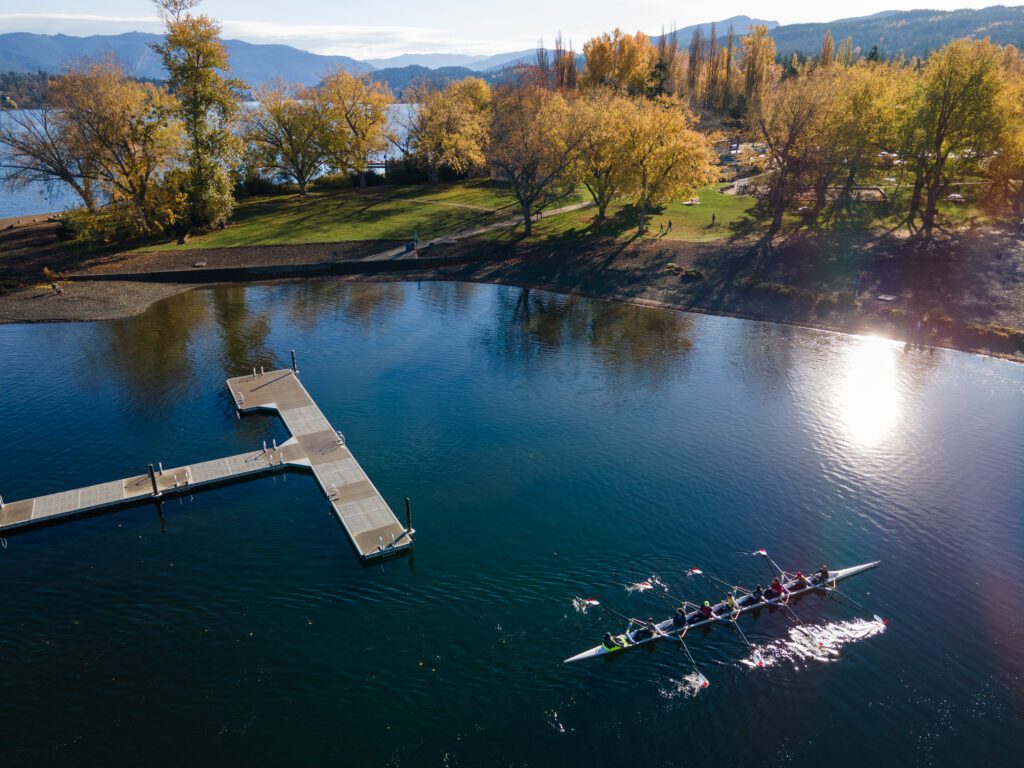
If you go
Club: Whatcom Rowing Association
What: Nonprofit, community-based rowing club offering all ages and experience levels the chance to learn the sport of rowing, founded in 2011.
Where: 2202 Electric Ave., Bellingham
Cost: Adults (annual) — $500 to $1,500. Juniors, grades 6-12 (by season) — $725 to $1,275, includes competitions. Middle school intro to rowing — $300 for a seven-week unit of twice-weekly practices. One-week camps for beginning juniors are $100. Financial aid and family memberships are available. USRowing memberships are required and cost $25.
Getting started: Check the club website for Learn to Row classes, and free community and national rowing days.
Information: whatcomrowing.org.
Meri-Jo Borzilleri is a freelance journalist whose stories have appeared in Cascadia Daily News, The Seattle Times, New York Times and ESPN.com, among other outlets. A former sports reporter for the Miami Herald, Colorado Springs Gazette and Hilton Head Island Packet, she was rowing a single scull when nearly run over by a tugboat during a Learn to Row session on Lake Union.

